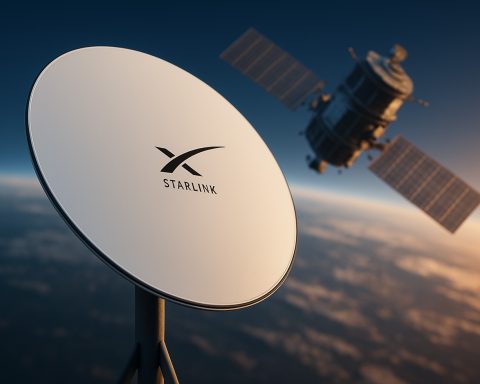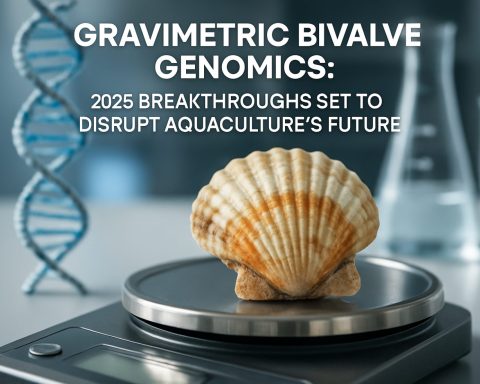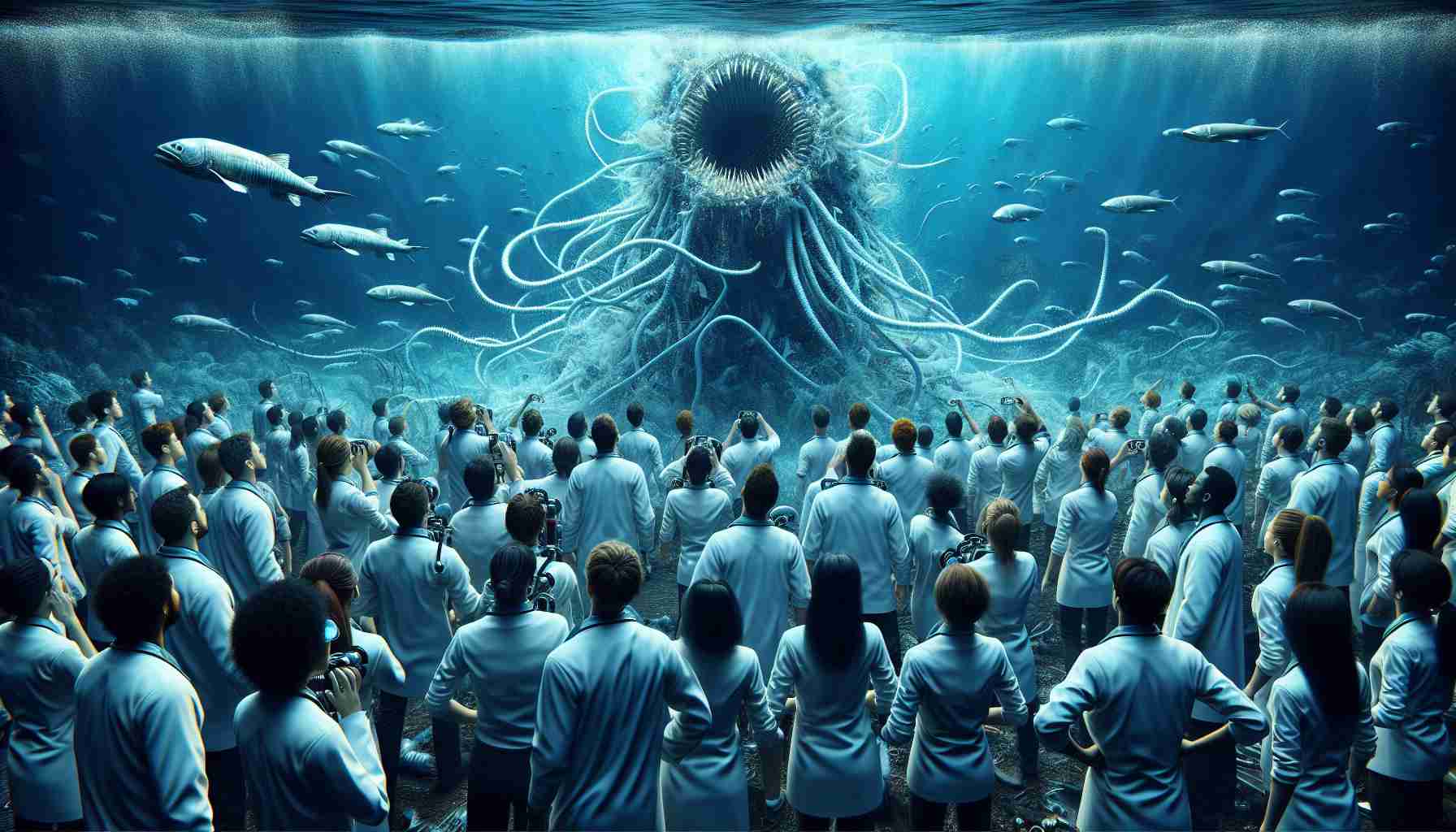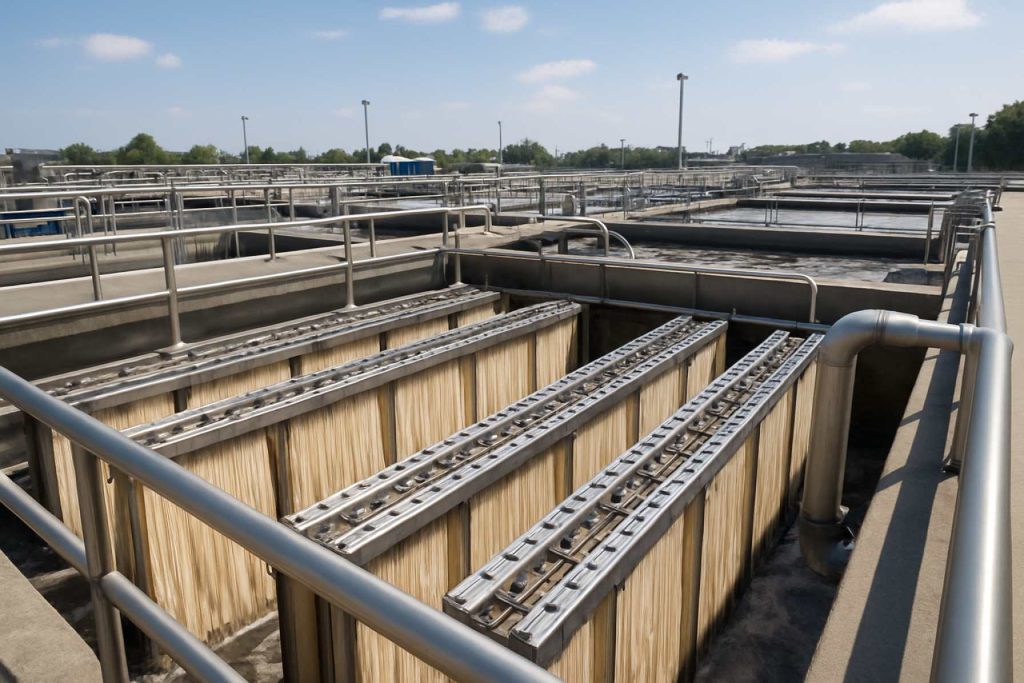2025 Mesenchymal Stem Cell Cryopreservation Technologies Market Report: Trends, Forecasts, and Strategic Insights for the Next 5 Years
- Executive Summary & Market Overview
- Key Technology Trends in Mesenchymal Stem Cell Cryopreservation
- Competitive Landscape and Leading Players
- Market Growth Forecasts (2025–2030): CAGR, Revenue, and Volume Analysis
- Regional Market Analysis: North America, Europe, Asia-Pacific, and Rest of World
- Future Outlook: Innovations and Emerging Applications
- Challenges, Risks, and Strategic Opportunities
- Sources & References
Executive Summary & Market Overview
Mesenchymal stem cell (MSC) cryopreservation technologies refer to the suite of methods, devices, and reagents used to preserve MSCs at ultra-low temperatures, typically in liquid nitrogen, to maintain their viability and functionality for future therapeutic, research, or biobanking applications. As of 2025, the global market for MSC cryopreservation technologies is experiencing robust growth, driven by the expanding clinical pipeline of cell-based therapies, increasing investments in regenerative medicine, and the rising demand for reliable long-term storage solutions for stem cells.
The MSC cryopreservation market is characterized by a dynamic interplay between established biobanking service providers, biotechnology firms, and equipment manufacturers. Key players are innovating in cryoprotectant formulations, automated freezing systems, and quality assurance protocols to address challenges such as post-thaw cell viability, scalability, and regulatory compliance. According to Grand View Research, the global stem cell cryopreservation equipment market was valued at over USD 1.5 billion in 2023 and is projected to grow at a CAGR exceeding 20% through 2030, with MSC-specific applications representing a significant and expanding segment.
The increasing adoption of MSCs in clinical trials for indications such as autoimmune diseases, orthopedic injuries, and cardiovascular disorders is a major market driver. Regulatory agencies, including the U.S. Food and Drug Administration (FDA) and the European Medicines Agency (EMA), have issued evolving guidelines for the storage and handling of cellular therapies, prompting technology providers to enhance traceability, sterility, and process standardization. Furthermore, the rise of allogeneic MSC therapies and the globalization of cell therapy supply chains are fueling demand for advanced cryopreservation logistics and cold chain management solutions.
Geographically, North America and Europe dominate the market due to their mature biopharmaceutical infrastructure and supportive regulatory environments. However, Asia-Pacific is emerging as a high-growth region, propelled by increasing R&D investments, government initiatives, and the expansion of stem cell banking services, as highlighted by MarketsandMarkets.
In summary, the MSC cryopreservation technologies market in 2025 is marked by technological innovation, regulatory evolution, and expanding clinical demand, positioning it as a critical enabler of the next generation of regenerative medicine and cell therapy products.
Key Technology Trends in Mesenchymal Stem Cell Cryopreservation
Mesenchymal stem cell (MSC) cryopreservation technologies are rapidly evolving, driven by the increasing demand for off-the-shelf cell therapies and the need to maintain cell viability and functionality post-thaw. In 2025, several key technology trends are shaping the landscape of MSC cryopreservation, focusing on improving cell recovery rates, reducing cryoinjury, and enabling scalable manufacturing for clinical and commercial applications.
- Advanced Cryoprotectant Formulations: Traditional cryoprotectants like dimethyl sulfoxide (DMSO) are being supplemented or replaced by novel, less toxic alternatives. Companies are developing proprietary cryoprotectant cocktails that minimize osmotic shock and cytotoxicity, enhancing post-thaw MSC viability and therapeutic potency. For example, Thermo Fisher Scientific and Miltenyi Biotec have introduced serum-free and xeno-free cryopreservation media tailored for MSCs.
- Automated and Closed-System Freezing Solutions: Automation is reducing human error and contamination risks. Closed-system cryopreservation platforms, such as those developed by Cytiva and Sartorius, enable consistent, GMP-compliant processing, which is critical for clinical-grade MSC production. These systems also support scalability, a key requirement for commercial cell therapy manufacturing.
- Controlled-Rate Freezing and Vitrification: Controlled-rate freezers are now standard in leading facilities, allowing precise temperature modulation to reduce intracellular ice formation. Vitrification, an ultra-rapid freezing technique, is gaining traction for its ability to prevent ice crystal formation altogether, further improving post-thaw cell quality. Research from National Institutes of Health highlights the superior recovery rates of MSCs using optimized vitrification protocols.
- Real-Time Monitoring and Quality Analytics: Integration of sensors and digital analytics into cryopreservation workflows enables real-time monitoring of critical parameters such as temperature, cooling rates, and cell viability. Companies like Eppendorf are incorporating data-driven quality control to ensure batch-to-batch consistency and regulatory compliance.
These technological advancements are collectively enhancing the reliability, safety, and scalability of MSC cryopreservation, supporting the broader adoption of MSC-based therapies in regenerative medicine and immunomodulation by 2025.
Competitive Landscape and Leading Players
The competitive landscape for mesenchymal stem cell (MSC) cryopreservation technologies in 2025 is characterized by a mix of established biobanking companies, specialized cell therapy solution providers, and emerging biotech firms. The market is driven by the increasing demand for high-viability, clinical-grade MSCs for regenerative medicine, cell therapy, and research applications. Key players are focusing on innovations in cryoprotectant formulations, automation, and closed-system technologies to minimize cell damage and contamination risks during freezing and thawing processes.
Leading companies in this space include Thermo Fisher Scientific, which offers a comprehensive suite of cryopreservation media and controlled-rate freezers tailored for MSCs. Miltenyi Biotec is another major player, providing GMP-compliant cryopreservation solutions and automated cell processing platforms. BD (Becton, Dickinson and Company) has expanded its portfolio to include advanced cryopreservation reagents and storage systems, targeting both research and clinical markets.
Emerging biotech firms such as Biosafe (a subsidiary of GE Healthcare) and Vycellix are gaining traction by developing proprietary cryoprotectant agents that reduce DMSO toxicity and improve post-thaw MSC viability. These innovations are particularly relevant as regulatory agencies tighten standards for cell therapy products, emphasizing the need for xeno-free and chemically defined cryopreservation solutions.
Strategic collaborations and acquisitions are shaping the competitive dynamics. For example, Chart Industries has partnered with cell therapy manufacturers to integrate advanced cryogenic storage and transport solutions, addressing the logistical challenges of global MSC distribution. Additionally, Lonza continues to invest in expanding its cell therapy manufacturing and cryopreservation capabilities, leveraging its global infrastructure to serve both clinical and commercial clients.
- Key competitive factors include product efficacy (cell viability and recovery rates), regulatory compliance (GMP, xeno-free), scalability, and integration with automated cell processing workflows.
- Market leaders are also investing in digital monitoring and traceability solutions to enhance quality control and regulatory reporting.
- Regional players in Asia-Pacific, such as Cyagen, are expanding rapidly, driven by increasing stem cell research funding and supportive regulatory frameworks.
Overall, the MSC cryopreservation technology market in 2025 is marked by rapid innovation, strategic partnerships, and a strong focus on clinical translation, with leading players vying to set new standards in cell viability, safety, and scalability.
Market Growth Forecasts (2025–2030): CAGR, Revenue, and Volume Analysis
The global market for mesenchymal stem cell (MSC) cryopreservation technologies is poised for robust growth between 2025 and 2030, driven by increasing clinical applications, expanding biobanking infrastructure, and rising investments in regenerative medicine. According to projections by Grand View Research, the stem cell market as a whole is expected to register a compound annual growth rate (CAGR) of approximately 9–10% during this period, with the MSC segment and associated cryopreservation technologies outpacing the broader market due to their unique therapeutic potential and scalability.
Revenue forecasts for MSC cryopreservation technologies indicate a market value surpassing USD 1.2 billion by 2030, up from an estimated USD 700 million in 2025. This growth is underpinned by the increasing adoption of advanced cryoprotectants, automated freezing systems, and closed-system storage solutions, which enhance cell viability and reduce contamination risks. The volume of MSC samples processed and stored is expected to grow at a CAGR of 11–12%, reflecting both the expansion of clinical trials and the proliferation of public and private stem cell banks worldwide.
Key drivers of this growth include:
- Rising demand for allogeneic and autologous MSC therapies in orthopedics, immunology, and cardiovascular medicine.
- Regulatory support and streamlined approval pathways for cell-based therapies in major markets such as the US, EU, and Asia-Pacific.
- Technological advancements in cryopreservation media and protocols, reducing post-thaw cell loss and improving therapeutic outcomes.
Regionally, North America and Europe are expected to maintain their dominance, accounting for over 60% of global revenues, due to established biobanking networks and high R&D activity. However, the Asia-Pacific region is projected to exhibit the fastest CAGR, driven by government initiatives, increasing healthcare expenditure, and the emergence of new biobanking facilities, as highlighted by Fortune Business Insights.
In summary, the 2025–2030 period will see accelerated growth in both revenue and volume for MSC cryopreservation technologies, with innovation and global expansion shaping the competitive landscape and supporting the broader adoption of regenerative therapies.
Regional Market Analysis: North America, Europe, Asia-Pacific, and Rest of World
The global market for mesenchymal stem cell (MSC) cryopreservation technologies is experiencing robust growth, with significant regional variations in adoption, regulatory frameworks, and technological advancements. In 2025, North America, Europe, Asia-Pacific, and the Rest of the World (RoW) each present distinct market dynamics shaped by healthcare infrastructure, investment levels, and clinical research activity.
North America remains the leading region, driven by a mature biotechnology sector, strong government and private funding, and a high volume of clinical trials involving MSCs. The United States, in particular, benefits from advanced cryopreservation infrastructure and a favorable regulatory environment, with the U.S. Food and Drug Administration supporting regenerative medicine initiatives. Major players such as Thermo Fisher Scientific and Becton, Dickinson and Company are headquartered here, further consolidating the region’s dominance. The North American market is also characterized by early adoption of next-generation cryoprotectants and automated freezing systems, which enhance cell viability and scalability.
Europe follows closely, with countries like Germany, the UK, and France at the forefront of MSC research and biobanking. The region benefits from harmonized regulations under the European Medicines Agency and strong public-private partnerships. European biobanks and research institutions are increasingly investing in advanced cryopreservation protocols to support clinical-grade MSC therapies. However, the market is somewhat fragmented due to varying national policies and reimbursement structures.
Asia-Pacific is the fastest-growing region, propelled by rising healthcare investments, expanding biotechnology sectors, and increasing awareness of stem cell therapies. China, Japan, and South Korea are leading the charge, with government-backed initiatives and a surge in clinical trials. The National Medical Products Administration in China and the Pharmaceuticals and Medical Devices Agency in Japan are streamlining regulatory pathways for cell-based products, accelerating market growth. Local companies are also innovating in cost-effective cryopreservation solutions tailored to regional needs.
Rest of the World (RoW) encompasses Latin America, the Middle East, and Africa, where the market is nascent but gradually expanding. Growth is primarily driven by increasing medical tourism, improving healthcare infrastructure, and international collaborations. However, limited funding and regulatory challenges continue to restrain rapid adoption in these regions.
Future Outlook: Innovations and Emerging Applications
The future outlook for mesenchymal stem cell (MSC) cryopreservation technologies in 2025 is shaped by rapid innovation and the emergence of new applications across regenerative medicine, cell therapy, and biobanking. As the demand for high-quality, viable MSCs grows, the industry is witnessing a shift toward advanced cryopreservation methods that address the limitations of traditional protocols, such as cell viability loss, differentiation potential reduction, and contamination risks.
One of the most significant innovations is the development of xeno-free and chemically defined cryoprotectants, which aim to eliminate the use of animal-derived components like fetal bovine serum (FBS) and dimethyl sulfoxide (DMSO). These novel cryoprotectants reduce immunogenicity and toxicity, making MSCs safer for clinical applications. Companies such as Thermo Fisher Scientific and Miltenyi Biotec are actively investing in the research and commercialization of such solutions, with several products already in late-stage development or early market adoption.
Automated, closed-system cryopreservation platforms are also gaining traction, offering improved standardization, scalability, and reduced contamination risk. These systems are particularly relevant for large-scale biobanking and allogeneic cell therapy manufacturing, where consistency and regulatory compliance are paramount. According to Frost & Sullivan, the integration of automation and digital monitoring in cryopreservation workflows is expected to accelerate, driven by the need for reproducibility and traceability in clinical-grade MSC production.
Emerging applications are expanding beyond traditional regenerative medicine. MSCs preserved with next-generation cryopreservation technologies are being explored for use in immunomodulation, treatment of autoimmune diseases, and as delivery vehicles for gene and drug therapies. The rise of personalized medicine is also fueling demand for patient-specific MSC banking, with companies like Lonza and Cord Blood Registry expanding their service offerings to include MSC storage for future autologous therapies.
- Adoption of AI-driven analytics for optimizing cryopreservation protocols and predicting post-thaw cell performance.
- Integration of microfluidics and nanotechnology to enhance cryoprotectant delivery and reduce cellular stress during freezing and thawing.
- Regulatory harmonization efforts, particularly in the US, EU, and Asia-Pacific, to streamline approval pathways for cryopreserved MSC-based products (U.S. Food and Drug Administration).
Overall, 2025 is poised to see significant advancements in MSC cryopreservation, with innovations enabling broader clinical adoption and unlocking new therapeutic frontiers.
Challenges, Risks, and Strategic Opportunities
The mesenchymal stem cell (MSC) cryopreservation market in 2025 faces a complex landscape of challenges, risks, and strategic opportunities as the demand for regenerative medicine and cell-based therapies accelerates. One of the primary challenges is the preservation of MSC viability and functionality post-thaw. Current cryopreservation protocols often result in reduced cell recovery rates and altered differentiation potential, which can compromise therapeutic efficacy. This technical hurdle is compounded by the lack of standardized protocols across laboratories and biobanks, leading to variability in clinical outcomes and regulatory uncertainty.
Regulatory risks are significant, as agencies such as the U.S. Food and Drug Administration and the European Medicines Agency continue to refine guidelines for cell-based products. Compliance with evolving Good Manufacturing Practice (GMP) standards and documentation requirements increases operational complexity and costs for market participants. Additionally, the use of animal-derived cryoprotectants, such as fetal bovine serum and dimethyl sulfoxide (DMSO), raises safety and ethical concerns, prompting a shift toward xeno-free and chemically defined alternatives. However, these novel cryoprotectants often come with higher costs and require further validation for clinical use.
Supply chain risks also persist, particularly in the context of global disruptions and the need for ultra-low temperature logistics. The high cost of liquid nitrogen storage and the risk of temperature excursions during transport can jeopardize cell integrity, leading to potential product loss and reputational damage for providers. Furthermore, intellectual property (IP) disputes over proprietary cryopreservation media and protocols may hinder collaboration and slow innovation.
Despite these challenges, strategic opportunities abound. The growing pipeline of MSC-based clinical trials and the expansion of cell therapy manufacturing facilities worldwide are driving demand for advanced cryopreservation solutions. Companies investing in automation, closed-system processing, and digital monitoring technologies can differentiate themselves by offering improved consistency and traceability. There is also a significant opportunity for partnerships between biobanks, research institutions, and technology developers to establish industry-wide standards and best practices, which could accelerate regulatory approvals and market adoption.
In summary, while the MSC cryopreservation sector in 2025 is confronted by technical, regulatory, and logistical risks, it is also positioned for growth through innovation, strategic alliances, and the development of safer, more effective preservation technologies. Market leaders such as Thermo Fisher Scientific and Miltenyi Biotec are actively investing in next-generation solutions, signaling robust competition and ongoing evolution in this critical segment of regenerative medicine.
Sources & References
- Grand View Research
- European Medicines Agency (EMA)
- MarketsandMarkets
- Thermo Fisher Scientific
- Miltenyi Biotec
- Sartorius
- National Institutes of Health
- Eppendorf
- Vycellix
- Cyagen
- Fortune Business Insights
- Pharmaceuticals and Medical Devices Agency
- Frost & Sullivan











